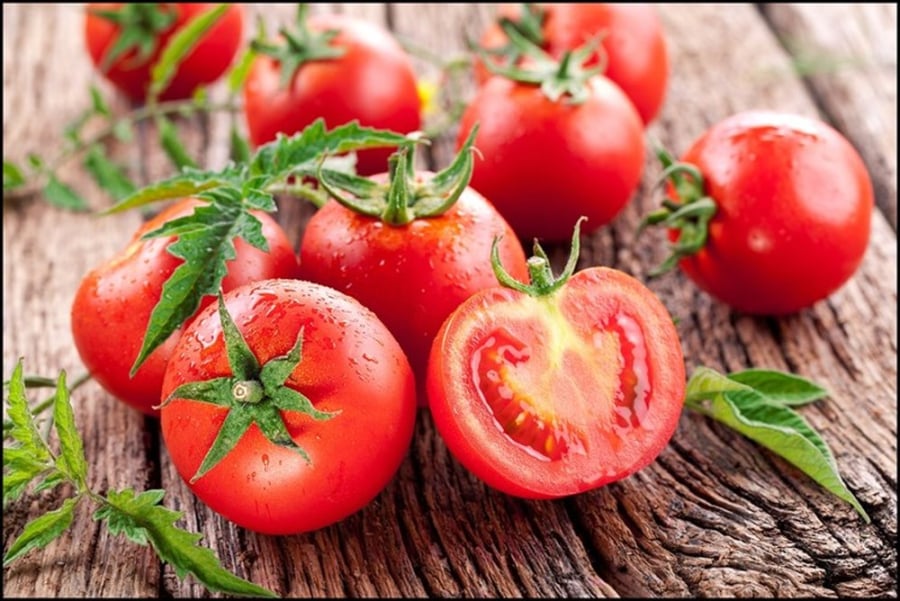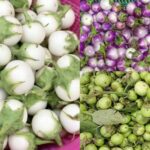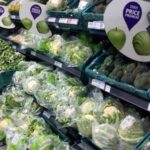In the whirlwind of modern life, ensuring a clean and safe food supply is a top priority for families. However, not everyone realizes that common vegetables and fruits in our daily meals can be heavily contaminated with pesticides, posing serious health risks. Here is a list of the four types of produce most prone to pesticide residue, which you should be cautious about when shopping to ensure your family’s well-being.
Cabbage and its cousins – Hiding a plethora of chemicals
Cabbage, including Chinese cabbage, spoon cabbage, and spinach, has long been an integral part of Vietnamese cuisine. Yet, these vegetables are frequently attacked by pests, leading to excessive use of pesticides by farmers. Chemicals are often sprayed directly on the leaves, and given the short growth period of cabbage, the pesticides may not break down before harvest, ending up on your dinner plate. Inadequate washing can cause these toxins to enter your body, damaging your liver and kidneys and even increasing the risk of cancers. To minimize risks, opt for trusted suppliers or, better yet, go for organic or home-grown cabbage.

Pesticides are often sprayed directly on leaves, and the short growth period of cabbage doesn’t allow for breakdown before harvest.
Green beans – A chemical cocktail in every bite
Green beans, also known as French beans, are a versatile ingredient in many dishes due to their crisp texture and sweet taste. However, they are highly susceptible to fruit-boring moths, especially during flowering and early fruit formation. To protect the crop, farmers often spray pesticides frequently, leading to concerning residue levels. These toxins not only linger on the surface but can also penetrate the beans, making thorough cleaning challenging. Consuming green beans with excessive pesticide residue can cause digestive issues, acute poisoning, and long-term toxic buildup in your body. When buying green beans, opt for fresh-looking, slightly imperfect beans, and don’t forget to soak and rinse them in salted water before cooking.
Tomatoes – A thin skin that soaks up chemicals
Tomatoes are not only nutrient-rich but also versatile, used in everything from salads to cooked dishes. However, their thin skin makes them highly susceptible to absorbing and retaining harmful pesticides. Given their propensity to attract pests and fungal infections, especially in humid conditions, farmers often resort to chemical treatments to ensure yield. This results in pesticide residue that is challenging to remove, especially as we often consume tomatoes raw. To minimize risks, opt for organic or traceable tomatoes, and always soak and rinse them in salted water, peeling the skin before use.

Humid conditions increase the likelihood of pest and fungal infections, leading to heavy pesticide use.
Cucumbers – A green facade hiding chemicals
Cucumbers are a staple in salads, pickles, and raw dishes. However, they are also one of the most pesticide-laden vegetables. To achieve that attractive, shiny green appearance, some farmers spray chemicals even when the cucumbers are close to harvest. While cucumber skin has some thickness, it readily absorbs these toxins, making thorough cleaning difficult, especially when consumed raw or lightly cooked. Long-term consumption of pesticide-laden cucumbers can lead to digestive issues, liver and kidney damage, and neurological problems. When buying cucumbers, opt for trusted sources, soak and rinse them in salted water, and peel the skin to reduce potential risks.
Marketplace wisdom: Protecting your family’s health
1. Know your source: Prioritize purchasing from clean food stores, reputable supermarkets, or grow your own if possible.
2. Be a vigilant observer: Perfectly shiny, blemish-free produce is often suspicious. Opt for naturally shaped and colored options.
3. Clean conscientiously: Soak vegetables in salted water or specialized cleaning solutions for at least 15 minutes before cooking to minimize chemical residue.
4. Go organic: Despite the higher price, organic produce is a safer and more sustainable choice for long-term health.
Conclusion: Safeguarding your family starts with the smallest choices
3 Bad Habits That Turn Eggplants From Superfood to Super-toxic: Uncover the Right Way to Enjoy This Delicious Veggie
“Cà pháo, a versatile vegetable that stars in countless culinary delights, especially the iconic cà pháo muối, a staple in traditional Vietnamese meals. However, unbeknownst to many, improper consumption of this vegetable can lead to potential health hazards. Discover the hidden dangers lurking beneath the enticing flavors of cà pháo and learn how to navigate its consumption safely.”
7 Supermarket Items Employees Say Are Not Worth Buying: Even on Sale, Avoid Number 2
“When it comes to grocery shopping, it’s crucial for consumers, especially health-conscious women, to be vigilant about the quality of the food they purchase. The following article delves into the types of food items that might not meet the required standards and how to make informed choices when shopping at supermarkets.”
The Pig’s Dirty Little Secret: What You Should Never Buy at the Butcher’s
Are you aware of the dangers lurking in your grocery store’s meat section? It’s time to uncover the truth and learn about the parts you should absolutely avoid, regardless of the tempting price tags or even if they’re given for free. Uncover the experts’ advice on the one cut of meat that should never be on your plate, all for the sake of your health and hygiene.






































